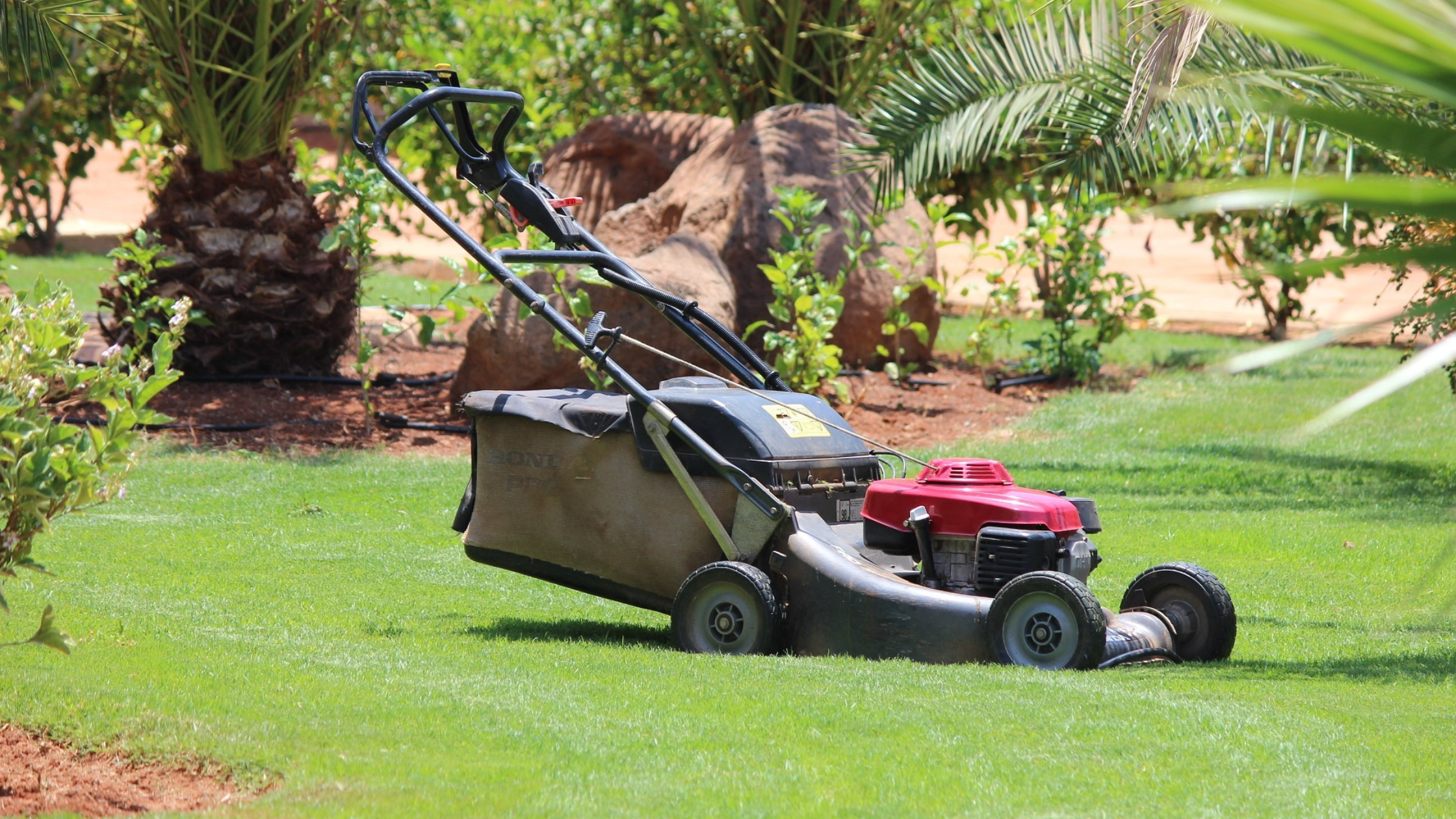Discover symptoms of a bad lawn mower battery, how to test it, and preventive measures to prolong battery life.
After reading this, also read our guide on how to charge a lawn mower battery for consistent performance.

Image credit: kikatani/Pixabay
Symptoms of a Bad Lawn Mower Battery
1. Difficulty Starting the Lawn Mower
There’s nothing more annoying than wanting to start your lawn mowing spree only to find out that the machine won’t come to life. This is one of the most prominent symptoms that something could be wrong with your lawnmower battery.
2. Dimming Headlights
Dimming headlights is one of the most clear symptoms of a bad lawn mower battery. Have you ever experienced the disheartening sight of your lawn mower’s headlights dimming as you work into the early evening hours? This could be one of those red flags indicating that your battery is losing its charge.
3. Slow Engine Crank
One of the more subtle, yet telltale signs of a failing lawnmower battery is a slow engine crank. This may occur when you try to start your mower and it takes longer than usual, or requires several attempts before firing up.
The ignition process relies heavily on the battery supplying an adequate amount of electrical energy. When it’s underperforming due to low voltage, this process can be noticeably delayed.
4. Battery Leaks or Corrosion
You might notice some leakage or corrosion around the terminals of the battery. This is not just an aesthetic issue. It’s a indicative of serious problems with your lawn mower’s battery.
The acid inside a battery is corrosive. Over time, if your lawnmower is not regularly maintained or if the battery isn’t properly taken care of, you could start seeing these leaks. Now, these aren’t like water leaks. They are acidic and can damage the mower’s components if left unchecked.
5. Low Battery Voltage
Have you noticed suspiciously low voltage levels in your lawn mower? Well it’s also one of the symptoms of a bad lawn mower battery.
But how do you keep an eye on this low-voltage issue? Regular maintenance is key here – keep checking whether there are any signs of wear and tear on the battery terminals or if there’s any buildup.
How to Test Your Lawn Mower Battery
So, you’ve noticed some of the symptoms we’ve talked about earlier and you’re ready for a bit of lawn mower DIY.
Use a multimeter
A multimeter measures electrical properties like voltage, current, and resistance. To use it on your battery, first make sure that your lawnmower is off and that the battery is disconnected from any charger or power source.
Attach the red probe to the positive terminal on your battery (usually marked with a ‘+’ sign) and the black probe to the negative terminal (usually marked with a ‘-‘ sign). If your multimeter reads anything less than 12 volts, it means that your lawnmower battery isn’t holding charge as well as it should be.
But don’t rush out to purchase a new lawn mower battery just yet! First, use the following tips to.
Load test the battery
To perform a load test on your lawn mower battery, you’ll need a battery load tester. This piece of equipment applies a specific load to the battery for a set period of time and measures the drop in voltage.
It’s all about observing how well your battery can maintain its charge under stress. Now, if there’s a significant drop in voltage during this test, it may be time to replace your lawnmower battery.
Check for corrosion
Pop open the hood of your lawn mower and visually inspect the battery. If you see any signs of this chalky substance, it’s a clear indication that your battery needs some attention.
Cleaning off corrosion is a fairly simple maintenance task. Make sure to wear gloves and safety glasses, and make sure you have baking soda, water, a toothbrush or small wire brush, and petroleum jelly.
Create a mixture of baking soda and water (about 1 tablespoon baking soda to 1 cup water) and scrub away at the corroded areas. After clearing away all traces of corrosion, rinse with clean water and dry thoroughly before applying a thin layer of petroleum jelly over each terminal.
Solutions and Preventive Measures
Replace the battery
Firstly, if your lawnmower battery is indeed failing, you may need to replace it. When choosing a new lawnmower battery, look for one that has the correct voltage and is compatible with your specific lawn mower model.
Keep the battery clean
Keeping it clean can go a long way towards preventing problems like corrosion or leaks that can slowly kill your battery over time.
Use a charger on your battery
Rather than letting your lawnmower sit idle with its battery slowly losing charge (which can damage the battery), hook it up to a charger. This will keep the voltage up while also extending its life.
FAQ
How long should a lawn mower battery last?
Typically, a lawn mower battery lasts about 3 to 5 years. However, this can vary depending on usage, maintenance, and storage conditions.
Can a bad battery damage my lawn mower?
Yes, a bad battery can strain the mower’s electrical system, potentially leading to issues with the starter motor and other components.
Is it worth replacing a lawn mower battery, or should I buy a new mower?
Replacing the battery is often more cost-effective than buying a new mower. However, if your mower is old or has other significant issues, it may be worth considering a new purchase.









